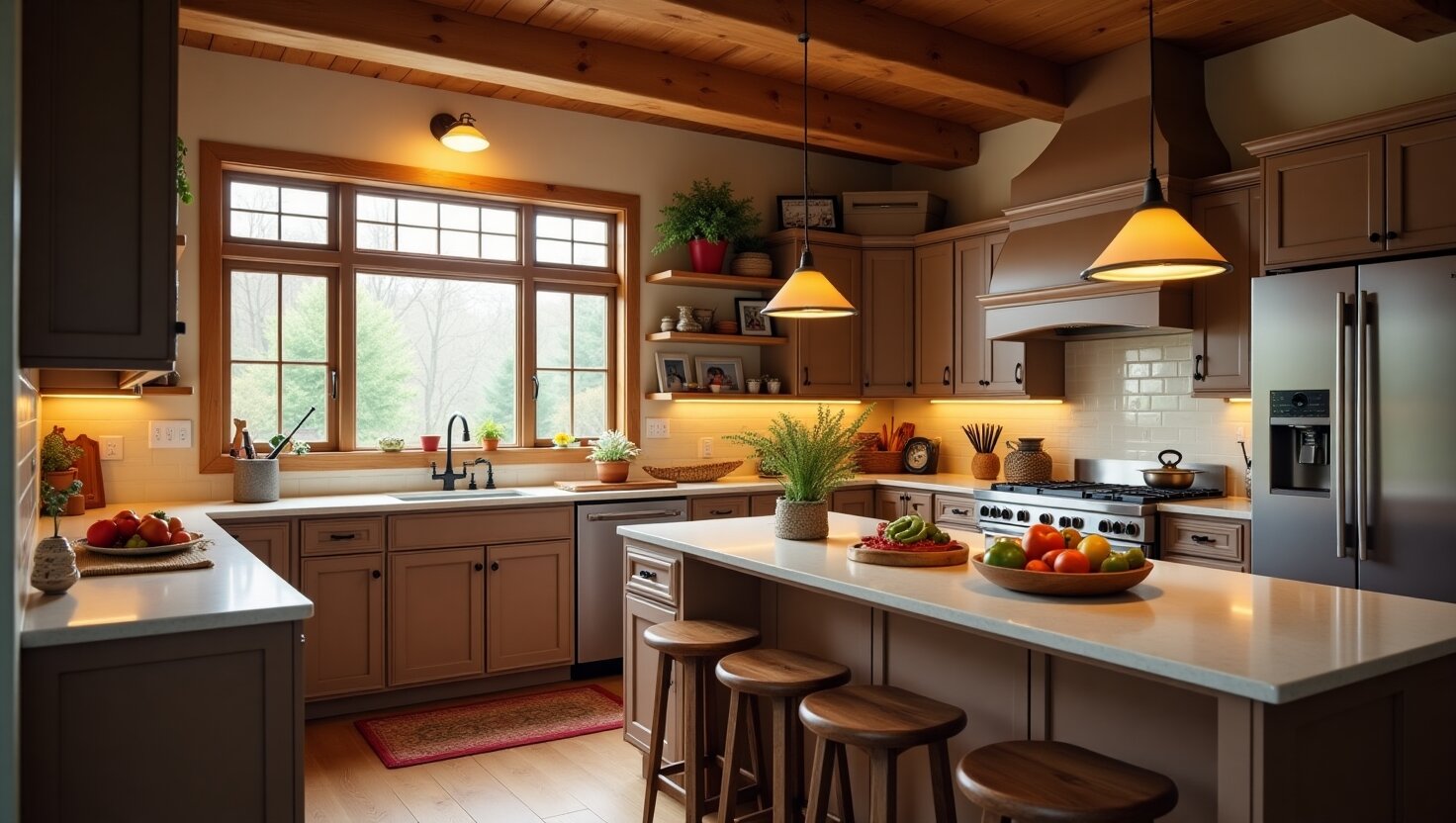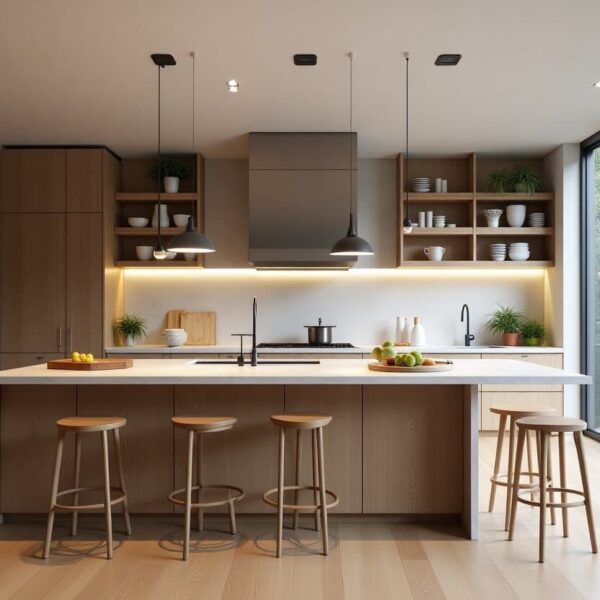Clear data saves costs, time, and ensures design accuracy. When working with a China cabinet manufacturer, measurement precision is the cornerstone of success—especially across language barriers, unit differences, and cultural design preferences.
This blog post is your definitive guide to professionally and precisely communicating your kitchen measurements, ensuring your China home cabinet maker can work efficiently and your project for custom kitchen cabinets from China goes off without a hitch.
Before Your Meeting
Before you even connect with a China kitchen cabinet manufacturer, some crucial prep work will make all the difference. Start by clearly defining your style and functionality. Think about your household needs—are there left-handed family members or specific storage solutions required? Simultaneously, set a realistic budget that covers not just the cabinets, but also installation, countertops, appliances, and demolition costs.
Accurate measurement is paramount. If measuring isn’t your strong suit, we recommend checking out our previous blog: “The Ultimate Guide to Measuring for Custom Kitchen Cabinets.” Once you have a grasp of the basics, create a preliminary sketch of your kitchen space. This should include initial measurements for wall lengths, ceiling height, door and window positions and sizes, and the approximate locations of water, electricity, and gas hookups. This foundational data will help your China cabinetry manufacturer gain an initial understanding of your space and needs.

During Meeting your kitchen cabinet supplier
Once your formal discussion begins, openly express your ideas, expectations, and concerns. Whether you have a clear kitchen concept or are still exploring options, don’t hesitate to articulate your lifestyle habits, aesthetic preferences, and any details that might affect kitchen functionality. This open communication not only builds trust but also provides your China home cabinet manufacturer with crucial information to deliver a design solution that truly meets your needs.
At the same time, take the time to understand your China kitchen cabinet manufacturer’s work process. Ask them to explain their design steps, fee structure, and delivery timeline. Having a clear grasp of each stage helps prevent unexpected issues later and allows you to better manage your entire renovation schedule. It’s advisable to remain open to your designer’s professional advice; while standing firm on your core requirements, maintain flexibility and listen humbly to their valuable suggestions based on practical experience.
When describing your requirements, avoid vague terms, local slang, or ambiguous descriptions like “it feels about right” or “roughly 2.5 meters.” Instead, be specific: for example, clearly state, “Ceiling height is 2550mm.” To prevent conversion errors, provide measurements in bilingual units (mm/inch). Always add clear notes rather than expecting assumptions. Use arrows, text, and icons to explicitly mark structures like walls or pillars, label appliance locations such as “refrigerator position,” and specifically point out irregular areas like exposed pipes or sloped walls—these details are crucial for accurate cabinet design.
Before submitting any information, conduct a final check. Verify completeness, ensuring no dimensions or critical information are missing. Ensure readability, making sure all text annotations are clear and unambiguous. Finally, if possible, seek a review from someone else, like a friend or a member of your renovation team, to help reduce errors.
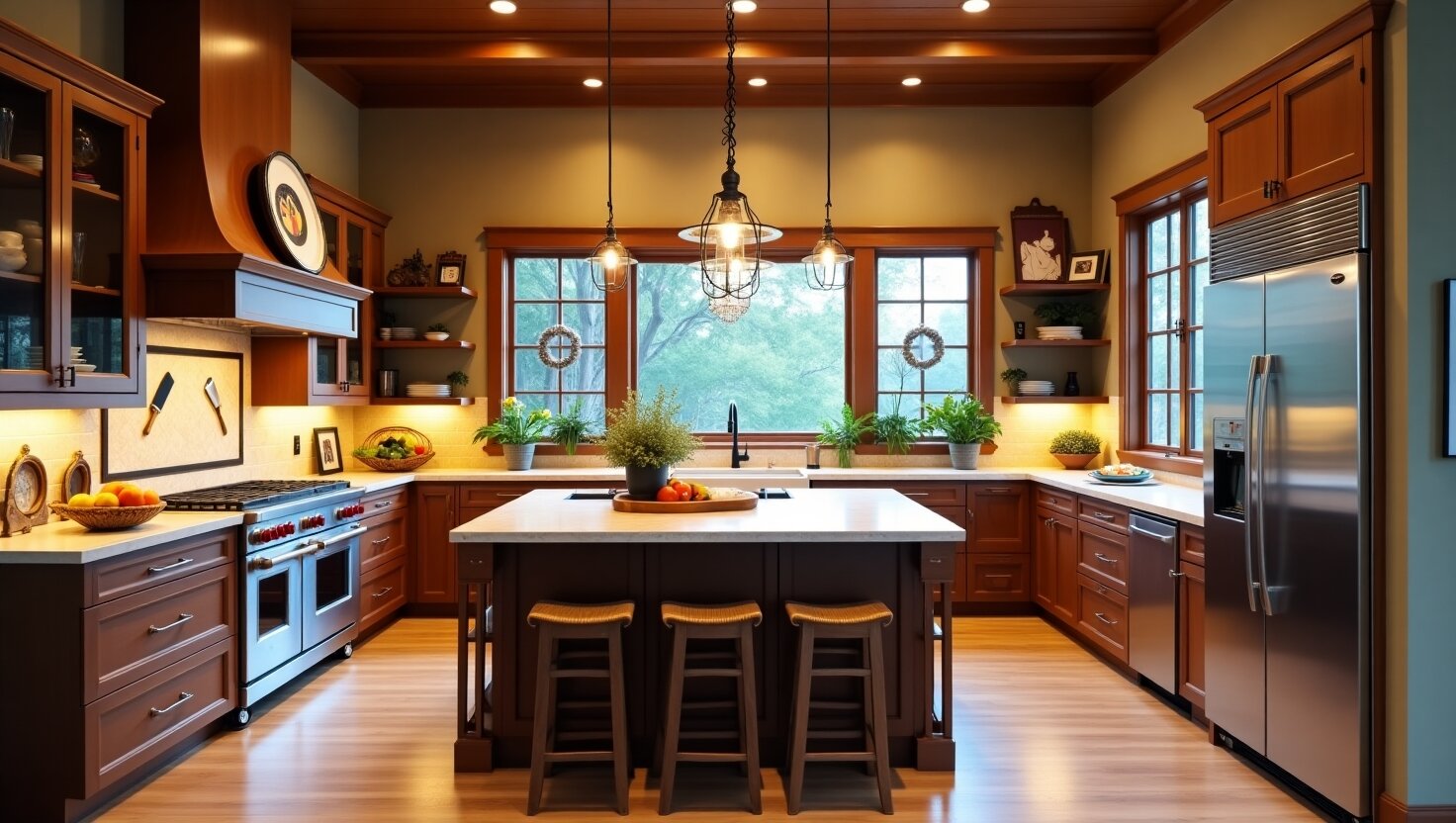
During the Design Process
During the design phase, it’s vital to define design priorities by distinguishing between rigid and flexible requirements. Clearly state non-negotiable dimensions, such as a storage cabinet’s depth needing to be 18 inches for specific appliances, while indicating parts that offer flexibility, like an upper cabinet’s height that can be slightly adjusted. Prioritize functionality, explicitly stating must-haves—for instance, drawers that must fully extend without obstruction—and noting areas where slight adjustments are acceptable, such as the cabinet door color. Simultaneously, specify tolerance ranges, clearly communicating the acceptable margin of error, like “decorative panels allow ±1/4 inch error,” which helps the manufacturer with production adjustments.
To enhance collaboration, leverage collaboration tools and visual aids. Actively share digital files, such as 3D scan files (e.g., Matterport) or cloud documents (e.g., Google Drive links), to provide the manufacturer with an intuitive understanding of your site. Regularly schedule video conferences to share screens, jointly review design drafts, confirm data in real-time, and resolve questions. Supplement these efforts with clear on-site photos, including close-ups of all walls, corners, floors, and ceilings. You can add annotations directly to these photos (e.g., “ceiling sloped here,” “exposed pipe”) to help your China kitchen cabinetry manufacturer better grasp the site conditions.
As designs evolve, engage in review, feedback, and collaborative decision-making. When you receive floor plans, elevations, and 3D renderings, meticulously review them to ensure they align with your expectations. Pay special attention to every detail, including dimensions, door swing directions, and handle positions. Provide constructive feedback, clearly explaining what you like and dislike and why, while also remaining open to professional design modifications. For custom cabinets, discuss material choices with your designer—covering cabinet materials, countertops, and hardware — to balance aesthetics, durability, and budget; ideally, view actual material samples.
Crucially, ensure two-way confirmation to guarantee mutual understanding. After sending data, proactively ask the designer if everything is clear and if any information is missing. Use video conferencing or screen sharing for joint reviews of drafts to ensure both parties share the same understanding. Promptly provide any additional information the designer indicates is missing, as this significantly boosts production efficiency. Finally, document and retain all communication information. Save all emails and confirmation records, including drawing versions and modification notes. Implement version control for updated data, preserving historical versions to avoid confusion and always working from the latest, accurate information. These written records are invaluable for later follow-ups and serve as clear evidence should any disputes arise.
Have a project in mind? Send a message.
Get the catalog for free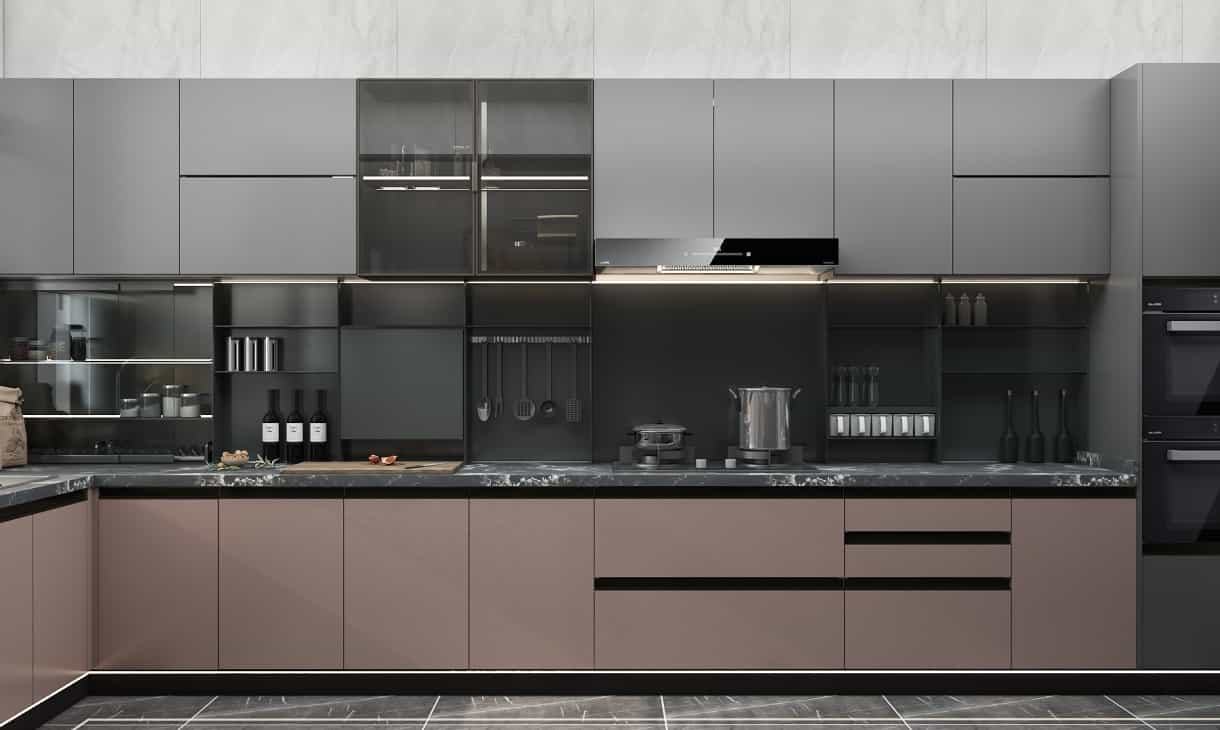
How Poor Communication Adds Costs
Poor communication during a custom cabinetry project doesn’t just create confusion — it can directly lead to significant costs.For instance, measurement errors resulting from unspecific tolerances can lead to installation failures and costly rework. Similarly, design misunderstandings that arise from a client’s verbal description being misinterpreted by the designer often necessitate multiple revisions of the design draft, consuming valuable time. Furthermore, a lack of confirmed finish details can result in incorrect material orders, incurring expenses from returns or costly remanufacturing. Ultimately, the need for repeated detail confirmations can cause significant project delays, leading to increased labor costs as the construction period extends. Therefore, it’s paramount to be 100% certain about all details before approving any drawings, as changes made post-approval may incur additional fees or delays.
Cross-cultural Communication Tips
When working with a China home cabinetry maker, cultural and communication differences can sometimes cause unintended misunderstandings. Being aware of these gaps early helps you build a more effective and respectful working relationship. For example, in many Chinese business settings, communication tends to be more indirect. A supplier may avoid saying “no” outright, instead using softer responses like “we will try” or “maybe possible,” even if the request is difficult or impractical. Understanding this nuance allows you to follow up with specific questions or ask for clarification without assuming agreement.
Additionally, technical terminology doesn’t always translate seamlessly between languages. Even common cabinet terms like “toe kick,” “overlay door,” or “grain-matching” may not be fully understood unless visual examples or annotated drawings are provided. This makes it crucial to combine verbal explanations with clearly marked diagrams or photos. Supplementing your communication with sketches or screenshots can bridge vocabulary gaps and reduce the chances of errors in production.
Time zone differences are another practical hurdle. If you’re based in North America or Europe, there will usually be a 6 to 12 hour gap between your working hours and your manufacturer’s. This makes it all the more important to write clear emails and anticipate the next steps in advance, so that decisions and revisions don’t get stuck in back-and-forth delays. A well-organized email with numbered questions, updated attachments, and a summary of pending items can speed up cross-border coordination significantly.
Ultimately, patience and clarity are your best tools. Approaching your China cabinet supplier with empathy and professionalism, while double-checking drawings, wording, and technical specs, can go a long way toward ensuring a smooth, successful collaboration across cultures.
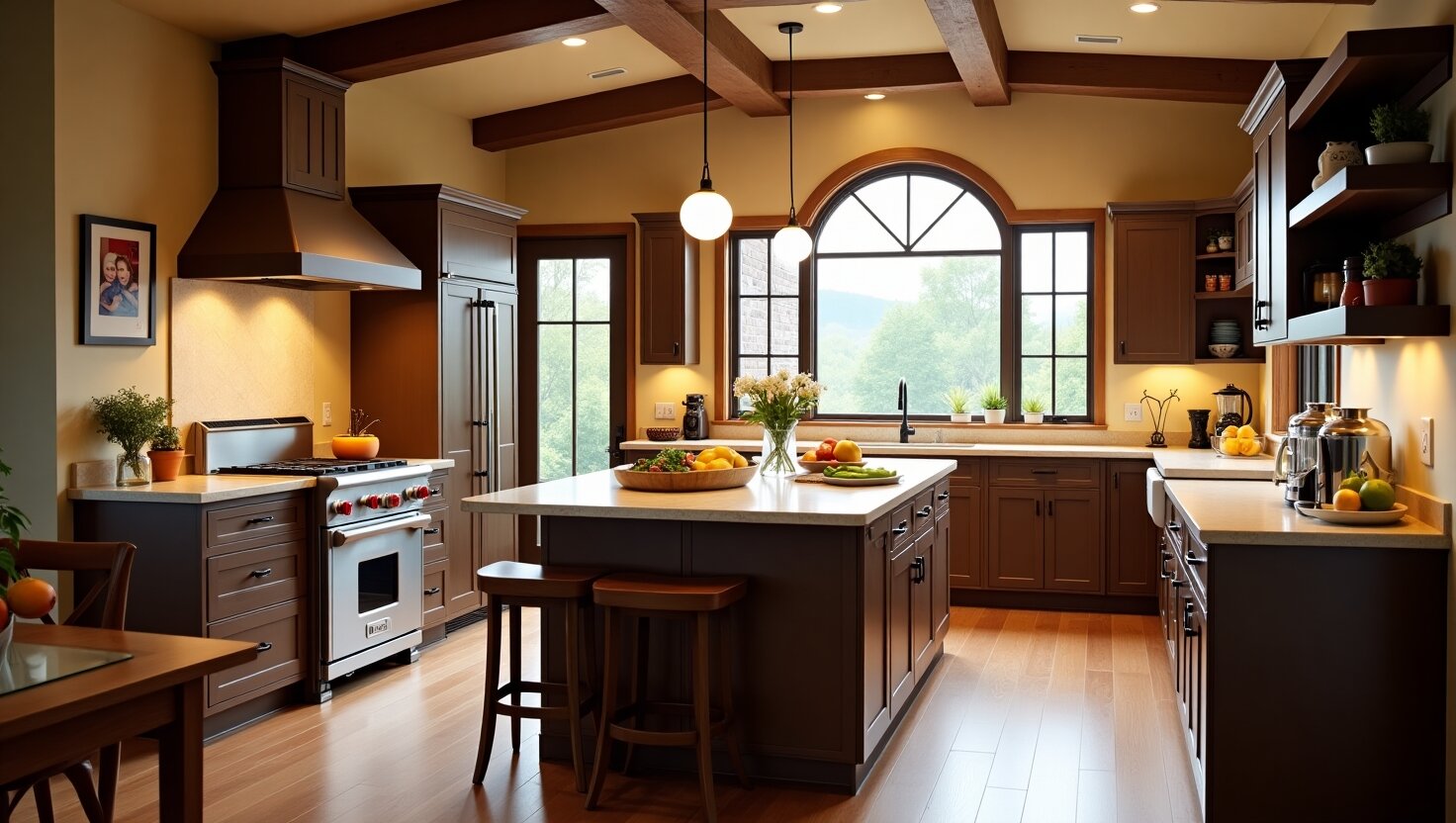
Your Perfect Custom Cabinet from China Awaits!
Even a hand-drawn sketch with simple photos is more reliable than vague descriptions. A few extra minutes of preparation can save you weeks of reworking headaches.
For over a decade, NextHome Furnishing has been a trusted China kitchen cabinet company, specializing in high-end custom kitchen cabinets from China, wardrobes, and other storage solutions, along with matching loose furniture. Our expertise in design, processing, OEM, and custom production ensures your vision becomes a reality. Let us help you achieve your dream kitchen!
Contact NextHome Now!
We are here to help you with your business needs. We have a team of experts who are always eager to help you.

